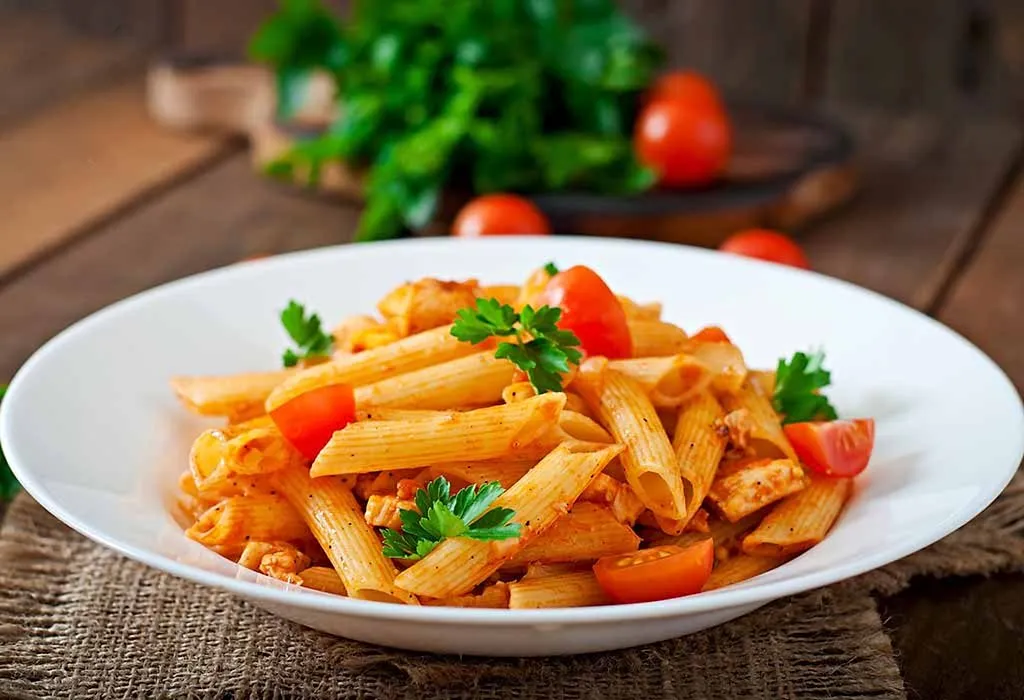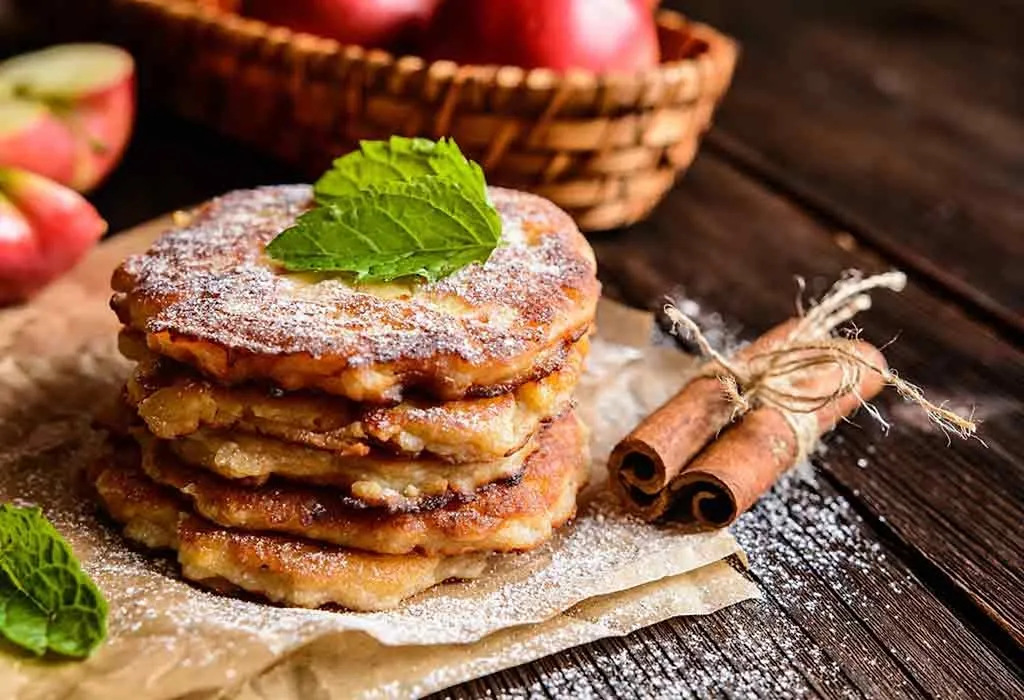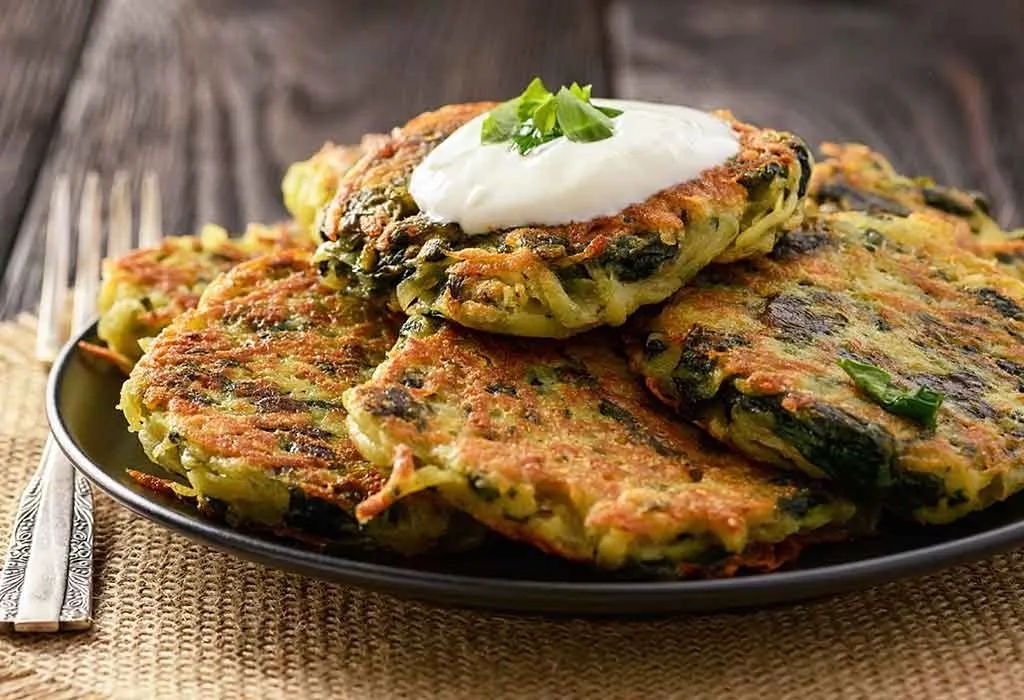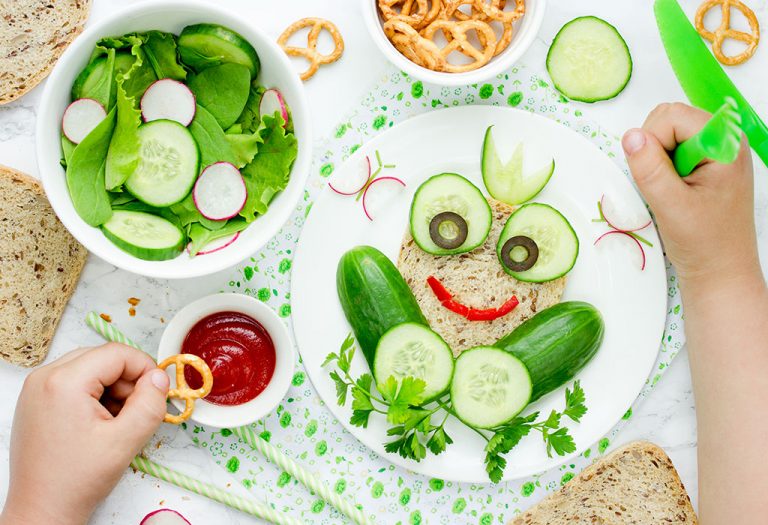14 Month Old Feeding Schedule, Recipes and Tips
Wow! Your little bundle of joy is already 14 months old! Watching your baby take baby steps around the house is an absolute delight. We’re sure you agree that a baby may be quite a handful at this age with his increasing urge to explore everything around him. Well, that’s not a surprise because your baby is mastering new skills and growing rapidly, so extra attention may be required for his nutrition and diet. If you are wondering what your baby should eat at this stage, we have more information on the 14-month-old feeding schedule right here for you! Read on!
What to Feed a 14-Month-Old?
A couple of months after your baby’s first birthday, he may still be making up his mind about what he likes or dislikes regarding food. However, as parents, you should keep introducing a variety of food items to your baby. Here are some 14-month-old baby food ideas that you can try for your baby:
1. Fruits/Vegetables
While your baby can eat all the fruits and vegetables you have introduced to him, here are some healthy choices for your little one:
- Bananas
- Kiwi
- Mangoes
- Melon
- Apple
- Pineapple
- Berries
- Carrots
- Peas
- Cauliflower
- Squash
- Broccoli
- Green beans
- Celery
2. Non-Vegetarian
Here are some non-vegetarian food options for your 14-month-old baby:
- Chicken
- Lean meat
- Fish
- Eggs
3. Other Food Items
Here are some other food items that can be included in your baby’s diet:
- Whole milk
- Cheese
- Yoghurt
- Pinto, black, navy and kidney beans
- Pasta
- Rice
- Cereal
- Pulses and lentils
How Much Should a 14-Month-Old Eat?
At 14 months, your baby should consume approximately three main meals and two snacks daily. On average, 40 calories per inch of your baby’s height is the average amount of calories that your baby should be consuming. The calories in food for 14-month-old babies should come from fresh fruits, vegetables, dairy and protein for optimal growth and development. Calcium is one of the essential nutrients for your baby, and thus, milk should be an important part of the baby’s diet. Choose whole milk for your baby, and if you are wondering how much whole milk should be given in a day, well, do not feed more than 16 to 24 ounces to avoid any kind of iron deficiency.
14-Month-Old Feeding Schedule
Here is a sample 14-month-old food chart for your baby:
| Meal Time | Food Name |
| Breakfast |
|
| Mid-Morning Snack |
|
| Lunch |
|
| Evening snack |
|
| Dinner |
|
The above food menu or diet plan is for reference purposes only. You can make changes as per your baby’s preference.
Foods to Avoid Feeding a 14-Month-Old Child
Your toddler needs a variety of nutrients at this age for his overall growth and development. However, you need to ensure he doesn’t have food allergies. Therefore, certain foods may still not be a good idea for your baby at this age. Here are some foods that you should avoid feeding your fourteen-month-old baby:
- Sticky food items such as marshmallows or peanut butter should be avoided as they may lead to choking.
- Hard food items that may become difficult to swallow, such as popcorn, hard candies, nuts, seeds, etc., should not be fed to babies.
- Also, refrain from giving hard vegetables, such as raw carrots, and fruits such as whole grapes as they can lead to choking. Make sure the vegetables are properly cooked, and fruits are cut into bite-sized pieces.
- Refrain from feeding chunkier or larger pieces of chicken, fish, and meat to babies.
- Be careful about food allergies, especially if you have a family history of food allergies. Be careful when feeding foods that may cause allergic reactions, such as eggs, milk, peanuts, etc.
Food Recipes for a 14-Month-Old Baby
Here are some main meal ideas for 14-month-old babies that you can try:
1. Veggie Pasta
A wholesome meal with loads of green vegetables, this yummy pasta can be served both as a lunch or dinner.
Ingredients:
- 1 cup Penne pasta, boiled
- 1 tablespoon carrot, finely chopped
- 1 tablespoon peas
- 1 tablespoon green beans, finely chopped
- ½ tablespoon onions, chopped
- 2-3 tablespoons tomatoes, chopped
- 1 tablespoon olive oil
- ¼ teaspoon black pepper
- ¼ cup tomato ketchup
- ¼ cup cheddar cheese
- Salt to taste
How to Prepare:
- Heat oil in a pan. Add onions and cook until they turn pink.
- Throw in the tomatoes and cook until they turn mushy.
- Add all the vegetables, salt, and pepper. Cook on medium flame until tender. Do not cover.
- Add tomato sauce and cook for a minute or two.
- Add boiled pasta and cook for a few minutes.
- Finally, add cheddar cheese and cook on low flame for a minute or two.
- Serve yummy veggie pasta at room temperature!
2. Apple Cinnamon Pancake
A perfect breakfast recipe, see your baby wipe off the entire serving in no time!
Ingredients:
- ¾ cup flour
- 1 medium-sized egg
- 2 to 3 tablespoons grated apple
- ½ teaspoon cinnamon
- 2 tablespoon palm sugar (you can use brown sugar or other healthy alternatives, too)
- ½ teaspoon baking powder (optional)
- 1 tablespoon cream (optional)
- Butter, for cooking
How to Prepare:
- Sieve flour and baking powder together and keep it aside.
- Beat an egg and sugar together until fluffy.
- Add flour into the egg and sugar mixture as you keep beating the mixture. Make sure no lumps are formed.
- Add grated apples and cinnamon powder to the egg and flour mixture. If the mixture is not of the required consistency, you may add cream to adjust it.
- Heat butter in a non-stick pan.
- Pour the pancake mix in the pan. Cook well from both sides.
- Serve warm pancakes with apple sauce or any other homemade syrup!
3. Corn and Spinach Fritters
This is a yummy snack recipe that is loaded with the goodness of sweet corn and spinach.
Ingredients:
- 1 cup sweet corn
- ½ cup baby spinach leaves
- ½ onion, finely chopped
- 2 cloves of garlic, finely chopped
- 1 medium-sized egg
- ¼ cup milk
- ¼ cup flour
- ½ teaspoon baking powder
- Salt to taste
- 1 to 2 teaspoon Olive oil for cooking
How to Prepare:
- Put sweet corn, baby spinach, egg, and milk in a blender jar. Blend until you get a coarse paste.
- Add onions, garlic, and salt and mix well.
- Add baking powder and flour to the mixture and give it a thorough mix.
- Heat oil in a shallow pan.
- Scoop out small amounts of the mixture and pour it in the pan (do not cook more than 4 to 5 fritters at a time), flatten the fritters using a spatula. Shallow fry the fritters until they turn brown on both sides.
- Serve these yummy fritters with a homemade sauce or dip!
These are some easy and nutritious recipes for your baby that you can make any time. You can even modify these recipes as per your preference or as per the ingredients available with you!
While some children will readily eat the foods their parents prepare, some might become picky and make feeding a challenge. Read on to know how you can feed your picky eater.
Tips for Parents to Feed a Picky Toddler
Babies experiment with tastes, flavours, and textures in food at this age, which is very normal. If you are dealing with a picky or fussy eater, these tips can help you feed him:
- Refrain from force-feeding your baby. If your baby refuses to eat a certain food, never urge him to eat. Try to introduce the same food after a few days. It is often seen that babies may try foods a few times before they know whether they like it or not.
- Do not confuse your baby when it comes to food. This means that you should offer plain and simple food to your baby which is easily recognisable. Complex meals, such as casseroles, may sometimes confuse babies, and they may refuse to eat.
- Make mealtimes fun times, which means do not feed your kid when he is whiny or cranky. Get the entire family to eat together and make the meal times more pleasurable and enjoyable for your little one. You can put on some soothing music, too.
- Offer meals at the same time every day. This helps the baby know about meal times, and thus, he may be more prepared to eat.
- If your baby wishes to eat food using his hands, let him do that. Babies love to touch and feel food. Soon, he will master eating with a spoon or fork, so don’t bother!
- Your baby is a big copycat, meaning he would like to copy what you do! So, if you want him to finish his broccoli, ensure you eat that, too. Be an example, and see your baby just follow you!
FAQs
1. How many times should a 14-month-old drink milk in a day?
A 14-month-old baby should typically have 2-3 servings of milk per day. They need about 16-24 ounces of milk in total. You can offer milk at mealtimes and as a snack. However, it’s essential to ensure that milk doesn’t replace a well-balanced diet with other foods, as solid foods are becoming increasingly important for their growth and development at this age.
2. What is the ideal weight of a 14-month-old baby?
The ideal weight for a 14-month-old can vary. On average, boys tend to weigh around 20-27 pounds and girls around 19-25 pounds. These numbers provide a general guideline, but individual growth patterns can differ. It’s crucial to consult with your paediatrician to monitor your child’s growth and ensure they are healthy and developing properly.
As your baby grows and hops from one milestone to another, the need for nutrition increases, and therefore, it becomes important to introduce different types and varieties of food to him. Breast milk or formula may still be an important aspect of your baby’s diet, but at this juncture, solid foods hold great importance to meet the added nutritional needs of your little one.
References/Resources:
1. Sample Menu for a 1-Year-Old Child: American Academy of Pediatrics; https://www.healthychildren.org/English/ages-stages/baby/feeding-nutrition/Pages/Sample-One-Day-Menu-for-a-One-Year-Old.aspx
2. Feeding & Nutrition Tips: Your 1-Year-Old; American Academy of Pediatrics; https://www.healthychildren.org/English/ages-stages/toddler/nutrition/Pages/Feeding-and-Nutrition-Your-One-Year-Old.aspx
3. Muth. N; Recommended Drinks for Children Age 5 & Younger; American Academy of Pediatrics; https://www.healthychildren.org/English/healthy-living/nutrition/Pages/Recommended-Drinks-for-Young-Children-Ages-0-5.aspx
4. Tips to Help Kids Enjoy Fruits and Veggies; Academy of Nutrition and Dietetics; https://www.eatright.org/food/planning/meals-and-snacks/get-fruits-and-veggies-to-the-plate
5. Finger Foods for Babies; Nemors KidsHealth; https://kidshealth.org/en/parents/finger-foods.html
Also Read:
Feeding Schedule for 13 Month Old
15 Month Old Baby Feeding Schedule
16 Month Old Feeding Schedule and Recipes
Was This Article Helpful?
Parenting is a huge responsibility, for you as a caregiver, but also for us as a parenting content platform. We understand that and take our responsibility of creating credible content seriously. FirstCry Parenting articles are written and published only after extensive research using factually sound references to deliver quality content that is accurate, validated by experts, and completely reliable. To understand how we go about creating content that is credible, read our editorial policy here.


























